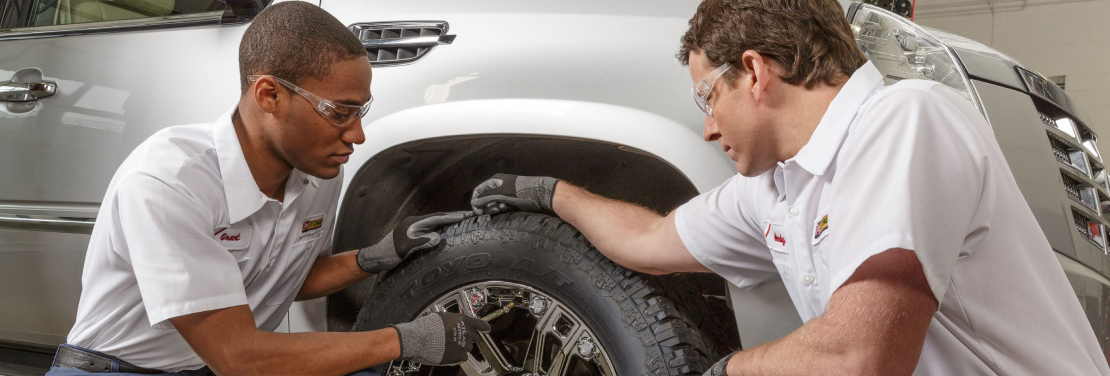Reliable Tire Shop Morris: Your Destination for Quality Tires and Providers
Tire Solution: The Influence of Weather
When it comes to ensuring optimal efficiency and security on the roadway, comprehending the influence of weather condition problems on tire solution is critical. In this discussion, we will check out the elaborate relationship between weather conditions and tire service, dropping light on the importance of weather-specific tire upkeep techniques and factors to consider.
Warmth and Tire Performance
When subjected to high temperature levels, tires experience changes in performance that can considerably affect lorry safety and handling. The warm produced from extended driving or heat conditions causes the tire rubber to soften, resulting in minimized tread life and enhanced wear. As the rubber ends up being softer, the tire's grip when traveling diminishes, impacting stopping ranges and overall grip. In severe cases, excessive warm can also cause tire blowouts, presenting a serious security threat to the lorry and its passengers.
In addition, high temperature levels can accelerate the process of tire aging, triggering the rubber to degrade quicker. This can result in splits, bulges, and other forms of damages that endanger the architectural honesty of the tire. To minimize the results of warmth on tire efficiency, vehicle drivers should regularly examine their tire stress, revolve tires to make sure even wear, and examine for any type of signs of damages. In addition, utilizing tires specifically made to hold up against heats can assist maintain optimal performance and security when traveling.
Cold Climate Effects
Cold climate conditions can have a considerable influence on tire performance and safety and security. In cold weather condition, tires might also lose air stress more quickly, which can affect taking care of and gas efficiency.
To reduce the impacts of cold weather condition on tires, it is essential to consistently check tire pressure and inflate them to the producer's advised degrees. Using wintertime or all-season tires made for cool weather condition conditions can also improve traction and grip on icy or snowy roadways - mopar tire service specials. Appropriate tire maintenance, including regular evaluations for wear and damages, becomes even more crucial during chillier months to make certain optimum efficiency and security
Rainy Issues Effect
Throughout rainy problems, tire efficiency and safety and security can be substantially influenced by the wet roadway surfaces and reduced exposure. The step pattern of tires plays an essential function in maintaining grip on wet roads. Tires with damaged footsteps are much more prone to hydroplaning, where a layer of water accumulates between the tire and the road surface, resulting in loss of grip. To fight this, chauffeurs ought to on a regular basis examine their tires for adequate tread depth and take into consideration purchasing tires specifically designed for wet problems.

Snow and Tire Safety And Security
When driving in snowy problems, having the ideal tires can make a considerable difference in hop over to here safety and security and efficiency. Winter season tires are developed with unique rubber compounds have a peek at this website and tread patterns to supply much better traction on snow and ice contrasted to all-season tires.
In addition to making use of winter months tires, it is essential to guarantee they are correctly blown up. Cold weather can create tire pressure to drop, influencing traction and handling (tire shop morris). Consistently inspecting and maintaining the proper tire pressure is necessary for optimal performance in snowy conditions

Weather-Related Tire Maintenance
When encountered with numerous weather, proper tire maintenance ends up being a crucial facet of vehicle safety and security and efficiency. Weather-related tire maintenance includes a variety of practices targeted at guaranteeing ideal tire function and longevity in various weather scenarios. One essential element of weather-related tire upkeep is tire stress law. Fluctuating temperatures can trigger tire pressure to vary, influencing grip and gas effectiveness. Frequently readjusting and checking tire stress according to manufacturer referrals is crucial for secure driving in transforming climate condition. Furthermore, tire walk deepness plays a considerable duty in handling various weather condition aspects. Tires with ample walk deepness offer far better hold on damp or icy roads, lowering the threat of skidding or hydroplaning. When walk wear gets to a particular depth is vital for preserving grip and security in adverse weather condition, examining tire step Source frequently and changing tires. By focusing on weather-related tire maintenance, motorists can enhance safety and security, improve car performance, and lengthen the life-span of their tires.
Final Thought
In final thought, weather problems have a considerable impact on tire performance and safety (morris tire and alignment). From heat affecting tire stress and wear to cool weather reducing grip, it is important to consider the climate when preserving and using tires.
In this discussion, we will check out the intricate partnership between weather problems and tire service, shedding light on the relevance of weather-specific tire maintenance techniques and considerations.
